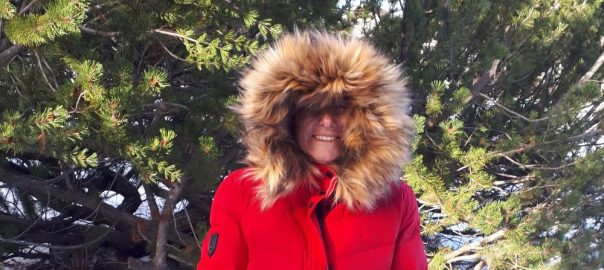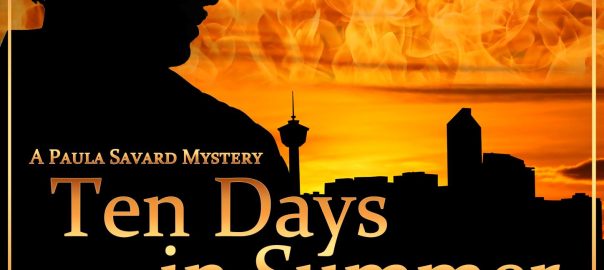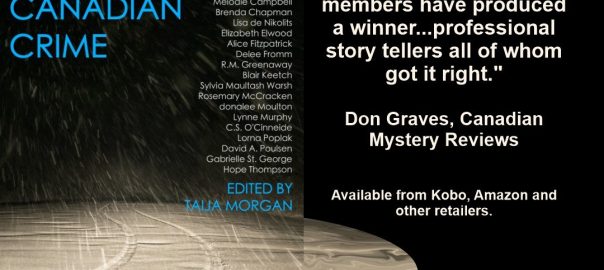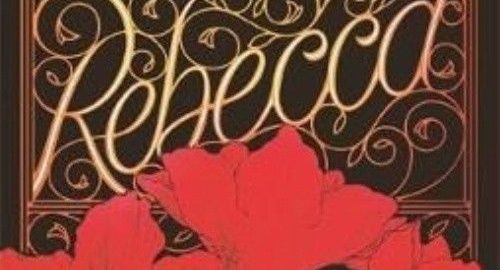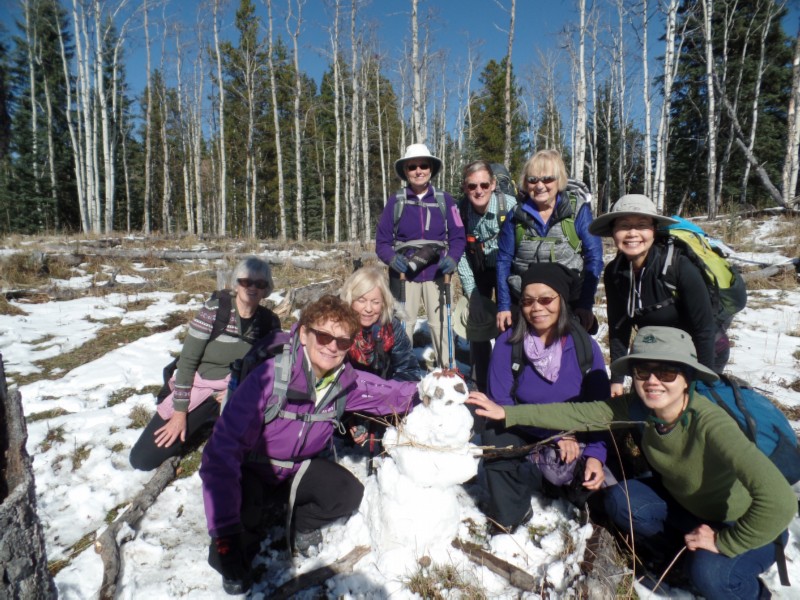Nine days before Christmas, my husband Will and I flew to Toronto to visit relatives in nearby Kitchener and enjoy a holiday in Niagara-on-the-Lake with our son, his wife, and our granddaughter. Everything went perfectly until a storm blew into eastern Canada on December 23rd, our day to fly home to Calgary. We woke to an email from Westjet, our airline carrier, advising that our flight was cancelled and they’d rescheduled us to a flight three days later to Regina, where we’d spend the night in the airport and connect to Calgary in the morning. Our choices were to accept this change or get a full refund. We were stunned, but our first challenge was to drive to Toronto airport before the rain turned to snow and the wind picked up. Our rental car rocked the whole two hours on the highway, but we made it safely.
At the airport, we learned Westjet had cancelled all their Canadian flights from Toronto that day. An agent told us our flight in three days was the best we’d get, due to the rush of holiday travel and flight cancellations following a snowstorm in Vancouver the previous weekend.
“If it’s any consolation,” she said. “Some people have spent six days in this airport.”
In our present mood, this wasn’t much consolation.
Fortunately, Will’s sister Bernice and her husband Bill live in the suburbs of Toronto. We phoned them to ask if they’d mind unexpected visitors over Christmas. They had no plans until their Boxing Day gathering with Bill’s family. We lugged our suitcases on the airport train to downtown Union Station, had lunch in the food court, and caught the commuter GO train to the station near their home in Scarborough.
Will tried calling Westjet to get a flight that left earlier and/or avoided a Regina overnighter. A recorded voice replied cheerily, “We’re happy to serve you, but aren’t taking calls now.” The website’s callback feature could only give us an appointment on December 30th, three days after we’d get home. The website blocked off new plane reservations through December 28th. Other airlines were either sold out for the Christmas period or charging exorbitant prices.
The next morning, Christmas Eve, Will tried phoning the airline again. To his surprise, the phone rang. He set it on speaker while we had breakfast, chatted, and played cards with Bernice and Bill. Five hours later, an agent came on the line. She checked reservations and found flights popping up, probably due to people cancelling their holiday travel when they learned they couldn’t get to their destinations by Christmas.
The agent rebooked us on a direct flight to Calgary at 10:15 that night. After a fun Skype ‘Twas the Night Before Christmas reading with our excited granddaughter, Bernice and Bill drove us to Toronto airport. We breezed through check-in and security. Our gate agents began boarding procedures and then announced our flight would be delayed because the pilot had to get here from Edmonton. Our new departure time would be one a.m. Everyone let out a collective groan.
The agents left, their shifts over. Passengers went to wait in a bar; a few milled around the gate desk. They noticed a sign flash that our flight was cancelled. We all quickly got emails telling us this. Someone said that a guest relations desk was down the corridor. We all trooped down and joined the lineup of passengers from a cancelled Vancouver flight. Will and I got emails with our new booking — four days from now. More emails arrived with food vouchers valid at the airport until the next day.
A guest relations agent grabbed a mic and spoke to the whole lineup. He told Toronto residents to go home and return for their rescheduled flights. The rest of us were entitled to hotel accommodation, although the airline had no rooms left in their supply. If we could find a hotel room, they’d later compensate us up to $150, plus expenses for transportation. Will and I remained in line with others who had specific questions. One man had a meltdown at the desk and shouted at the agents that he’d been stuck here since yesterday waiting for a flight. After he stormed off, the clock struck midnight. An agent wished us all, “Merry Christmas.”
After discussing our situation with an agent, Will and I decided to spend the rest of the night in the airport, rather than hunt for a hotel, and collect our unloaded luggage in the early morning, when the lineup in the baggage area would be shorter. We’d wait to phone Bernice after she got up in the morning to ask is she’d take us in again.
In a relatively unpopulated departure gate, we lay on connected chairs to catch some sleep. The chairs were hard. I brooded on our faulty choice to grab this flight rather than accept the one the airline had assigned. The airport was chilly and we’d packed our coats in our luggage, another bad decision.
At four a.m., we gave up trying to sleep and went to the baggage area, which was a sea of suitcases. The agent told us there were ten times more cases stored elsewhere and he wouldn’t spend two or three hours searching for our individual luggage. Instead, the airport would scan all the bags and eventually send them to their destinations. But what would we do for the next three days in Toronto winter with no overcoats? This was our problem.
We spent our airport food vouchers on breakfast and snacks, and caught the train to downtown. Travel was all indoors, and easy with only carry-on bags and few passengers on Christmas morning. At Union Station, we phoned Bernice and wished her Merry Christmas.
“You’re home already?” she said.
“Ah, no.”
On our commuter train ride, the sun came out. We passed pretty views of neighbourhoods waking up and waves whipping in Lake Ontario. Bernice and Bill picked us up at the station for the second time and reminded us they save everything and stock up on supplies. They loaned us jackets and shirts that they didn’t wear anymore, toothbrushes, and (for Will) pajamas and a razer. Bernice asked if I’d prefer pajamas or a nightgown.
“A nightgown would be good.”
“What length?” she said. “And do you like short sleeves or long?”
It was like living in Walmart.
Despite the fatigue from our sleepless night, we enjoyed Christmas Skype and Zoom calls with relatives, sharing our granddaughter’s thrill with her presents, and had tasty hamburgers and fries for Christmas dinner. On Boxing Day, Will and I went to the real Walmart to buy underwear and socks. After lunch, we strolled through the Toronto Zoo, where Bernice volunteers. The zoo wraps Christmas presents for all the animals to claw open when they smell the food inside. Will wanted to call Westjet again in hopes of getting a better flight, but I noticed they’d upgraded us to Premium seats and the connecting flights left and arrived at convenient times. He agreed to wait another day to fly home in comfort.
We used that extra day to shop for winter coats at Costco. I’d been thinking I needed a new one anyway and bought a down coat, in red, a coat colour I had never considered wearing.
On December 28th, we once more rode the trains to Toronto airport. With no luggage to check, we got to the gate quickly, and learned our flight would be delayed while waiting for crew members.
Uh, oh, we thought. That’s how it begins.
Before long the desk agent announced the flight was cancelled due to lack of crew. She advised everyone to stay in place while they rebooked our seats. Will and I got a phone call from Westjet, offering a flight in two hours to Calgary via Vancouver. This plane was also delayed, waiting for ground crew, but the crew actually arrived. We boarded the plane, but had to wait another hour because the flight attendants counted more passengers on the plane than the number that had checked-in at the gate. They kept counting us, consulting their tablet seating charts, and discussing the problem with the pilots and management. Eventually we took off, either because they got the numbers to balance or figured ‘what’s an extra passenger or two?’
We assumed this delay meant we’d miss our connection in Vancouver, until a flight attendant checked our boarding passes and said this plane was our connecting flight. In Vancouver, it would turn around and fly to Calgary, where the pilot lived. We couldn’t believe we’d get home that night, but we did, and walked into our house at 1:20 a.m.
On New Year’s Day, Westjet delivered one of our suitcases. The other one arrived the next day. All of our possessions were intact. Our journey was over.
What’s my take-away from this experience?
In hindsight, when weather and the airline threw a wrench in our plans, rather than gripe about an airline that couldn’t handle snow in Canadian winter and demand the near impossible — getting home for Christmas — we should have accepted the situation and made the most of the unwanted change of plans. When we got past the griping, we enjoyed our Christmas spent with generous relatives. It was a more interesting and memorable Christmas than the quiet, alone time we’d planned; arguably a better holiday time. Bernice and Bill agreed (I think they meant it). Will and I also enjoyed sharing stories with our fellow stranded travellers and jokingly called them our new friends. I wonder how their journeys ended.
Next time I fly, I’ll bring some essentials in my carry-on luggage, including warm clothing. Although, there are always stores where I travel and I really like my souvenir red coat.

Happy New Year!
